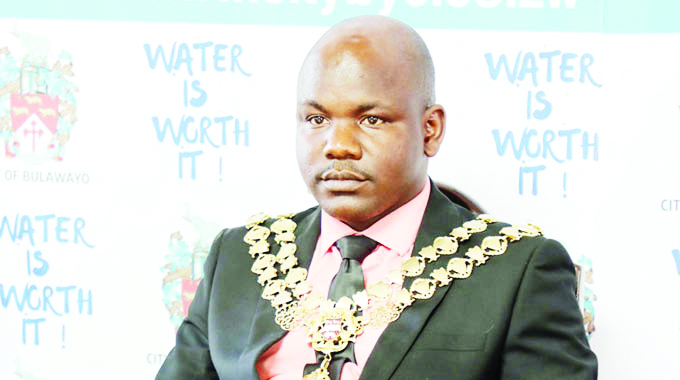
The Sunday News

Vusumuzi Dube, Online News Editor
ONLY 13 percent of Bulawayo residents last year managed to pay their bills in full, with the local authority revealing that this has been adversely affecting service delivery in the country’s second largest city.
This comes at a time when the local authority is owed more than $1,3 billion, with a huge chunk of the debt being from residents who owe $1 billion with industry and commerce owing $670 million, Government debtors, $126 million and self-funding ministries and parastatals $52 million.
Speaking during a Sunday News podcast, Bulawayo Mayor, Councillor Solomon Mguni revealed that while residents were trying their utmost best in terms of paying what they owed, a paltry 13 percent of residents had managed to pay their entire bills last year.
He said they remained hopeful that when they tally this year’s figures there would be some form of improvement, noting that the local authority needed the funds so as to further service delivery.
“We are owed a significant chunk of money, obviously you will then look at the environment that the residents have to contend with, most of them are in the informal sector, yes, residents are paying but looking at the figure of last year, by December 2020 only 13 percent of the residents had fully paid their bills.
“We also still have legacy debts that as a city we have and there are those debts that residents continue to owe but we have recently introduced the credit policy to try and recover some of those debts that are recoverable and write off those debts that are unrecoverable,” said Clr Mguni.
The mayor said the credit policy will go a long way in assisting the local authority to recover what was owed to them and subsequently help improve service delivery.
“This is something we think, going forward will assist us because previously there has been reluctance to implement the credit policy because maybe some felt that it will have political consequences but now we thought that if we are to be serious we must recover what is owed to us so that we continue to provide services,” said the mayor.
Meanwhile, it has since emerged that the local authority could be forced to rework its 2022 budget projections after it emerged that they did not follow the Ministry of Local Government and Public Works guidelines.
In October, the local authority reduced their budget projections for 2022 from $24 billion to $23 billion after residents raised concern over the margin of increment that was initially suggested by the local authority.
At the onset of the 2022 budget consultation exercise, the local authority announced a $24,7 billion with $16,8 billion being the revenue budget while $7,9 billion was the capital budget.
They later decided to slash the proposed budget by $900 million to $23,8 billion. Of the $23,8 billion, $15,9 billion will be the revenue budget while $7,9 billion will be the capital budget.
In the latest development, it has since emerged that the local authority could be forced to rework the budget after passing it before receiving the Ministerial guidelines. After receiving the guidelines it has since emerged that some aspects of the 2022 budget do not fall in line with them.
“Government had released the budget guidelines dated 12 October 2021 and council had received these on 14 October after the announcement of the budget to the public. It would require that council invite two ministry staff to visit council prior to finalisation of the budget to guide council prior to finalising its submission.
“This would ensure that council’s budget was integrated into the national budget and approved in good time. It would also assist council to better understand government processes and hopeful appreciate how to unlock the obstacles that had delayed gazetting of the tariffs,” reads the report.
It was further revealed by the acting Town Clerk on the day, Engineer Simela Dube that already the local authority had noted some misalignments which had to be rectified.
“The acting town clerk advised that the problem was that the guidelines came after the budget had been announced. When the guidelines came out, there were some misalignments that had been observed.
“This had to start at departmental level. The budget had to be aligned so that it met the required standard,” reads the report.
Responding to questions on how this would affect the entire process, Clr Mguni said normally treasury releases the guide lines earlier before councils approve their budgets and in this case because of the deadline and expectations of the parent ministry, they came when council had already announced the budget
“However, the guidelines are not about figures and priorities of the budget, but councils are required to align their budgets to the pillars of the National Development Strategy 1.
“We have now resolved to invite two officials from our parent ministry to help our financial services to unpack the guidelines and align same to the principles of the national budget before our budget is submitted to the ministry for approval,” said Clr Mguni.



